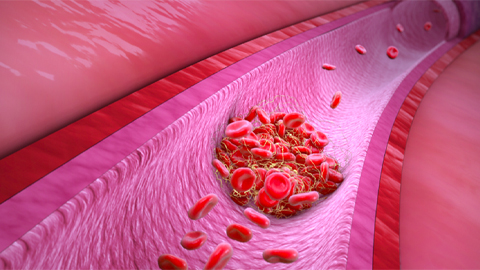Bone and Joint Health Action Week 2021
The National Institute of Arthritis and Muscoskeletal and Skin Diseases’ Bone and Joint Health National Action Week is dedicated to discussing strategies to maintain the health of one’s bones and joints. Inspired by this objective, here I explore recent research about bones published in the Journal of Biological Chemistry.
Bone tissue, the majority component of the human skeleton, is a rigid, dynamic, multifunctional tissue. Bones provide the structure necessary for the body to move through and interact with the world, physically protect certain organs and tissues, and serve as a reservoir of essential minerals. Like most biological tissues, bone is susceptible to damage, specifically fractures and breaks. Study of bone tissue development, homeostasis and dysfunction at the molecular and cellular level can inform evidence-based strategies to protect and/or repair bone health.
Bone development: Which proteins are involved in bone mineralization?
Bone mineralization, or deposition of calcium hydroxyapatite crystals in the tissue matrix, strengthens new bone tissue during development or after a fracture. Osteoblasts (the cells responsible for bone formation), collagen (a structural protein) and bone sialoprotein (a bone-specific phosphoprotein), all play key roles in this process, but the molecular mechanisms governing bone mineralization remain obscure.
To address this gap, Jeff P. Gorski of University of Missouri–Kansas City and colleagues examined biomineralization foci, which are extracellular structures produced by osteoblasts and the initiation site of bone mineralization. The team’s results show that biomineralization foci are enriched in bone sialoprotein and an alternative exon of collagen IV’s N-terminal domain, dubbed 6b, and that these two proteins bind to each other in biochemical assays. Moreover, this selective binding interaction between bone sialoprotein and the 6b collagen IV fragment is preserved in in vitro osteoblast cultures and localized to in vivo fracture sites in rats.
This study identifies a new molecular mechanism involved in initiation of bone mineralization — namely, binding of bone sialoprotein to the 6b collagen IV fragment in biomineralization foci. In the future, this binding interaction may enable targeted delivery of anticancer drugs to bone tumors and/or bone mineralization materials to weak bones found in Paget’s disease and elderly patients.
Bone homeostasis: What role does the chemokine CCR3 play?
Osteoclasts — the cells responsible for bone resorption — differentiate from macrophages upon recognition of the protein RANKL, which is secreted by osteoblasts (the cells responsible for bone formation). Bone remodeling is a lifelong process that involves a precise equilibrium between the activity of these two cell populations. Recent research suggests that chemokine signaling, which regulates inflammatory processes, may also modulate the equilibrium between osteoclasts and osteoblasts.
A recent study by Sara Rosendahl and a team from Umeå University in Sweden probes the relationship between C-C chemokine receptor 3 (CCR3) — which is upregulated during osteoclastogenesis — and osteoclast differentiation, gene expression, and function using mice with and without the gene for CCR3. RANKL-stimulated macrophages from CCR3-deficient mice produced larger osteoclasts with enhanced bone resorption activity. These osteoclasts displayed altered expression of chemokines linked to osteoclastogenesis, but not osteoclast-specific genes. Additionally, cortical bone in CCR3-deficient mice was thinner and lower in volume, and this phenotype was accompanied by increases in rates of bone formation and mineralization apposition.
Previous work demonstrates that inflammatory conditions, such as rheumatoid arthritis and periodontitis, lead to bone loss. This study establishes that a specific chemokine — CCR3 — regulates osteoclast activity and shifts the equilibrium between osteoclasts and osteoblasts. When combined with future research characterizing how chemokine signaling influences bone remodeling, this study may help identify effective interventions and therapies for the bone loss observed in inflammatory conditions.
Bone dysfunction: Can a small molecule treat aging-linked dysfunctional bone repair?
Bone loses its capacity for remodeling and regeneration with age, and aging-linked disorders such as Alzheimer’s disease exacerbate this decline in function. Unfortunately, strategies to promote bone mineralization and formation are currently limited, leading to increased frequency and severity of bone fractures with both age and the presence of aging-linked disorders.
Brandoch Cook and colleagues at Cornell Weill Medical Center identified a small molecule, dubbed DIPQUO, that enhances bone regeneration in multiple model systems. In new work, the research team further characterizes the biological activity and therapeutic potential of DIPQUO. In a library screen, the researchers discovered that DIPQUO inhibits the in vitro activity of GSK3-β, a kinase linked to osteogenesis. In subsequent experiments, the team verified that, acting through GSK3-β, DIPQUO stimulates molecules and cells involved in bone formation. Moreover, GSK3-β signaling regulates activation of tau microtubules, a process implicated in Alzheimer’s disease. In an in vitro assay, Cook and colleagues demonstrated that DIPQUO also reduces phosphorylation of tau microtubules at a site linked to activation.
Since DIPQUO stimulates bone regeneration and reduces tau microtubule activation, the small molecule may simultaneously inhibit bone loss and cognitive decline in Alzheimer’s disease patients. Future work is necessary to validate these results in vivo and characterize how DIPQUO modifies ubiquitous GSK3-β signaling in other cells and tissues.
Recommended reading
- Osteoporosis, or the progressive loss of bone density, is an age-related disease that can lead to bone fractures and loss of mobility. In a health observance published on 2020 World Osteoporosis Day, ASBMB Today contributor Sarah Schrader discussed the clinical manifestations of and recent research related to osteoporosis.
- Bone tissue is rich in calcium and phosphorous. Learn more about the biological roles of these two elements in an essay from ASBMB Today’s 2019 series about (bio)chemical elements.
- While traveling in space, astronauts suffer from loss of muscle mass and bone density. Recent research demonstrates that pharmacological intervention can reverse these effects in mice. The therapy may benefit both astronauts and people on Earth.
Enjoy reading ASBMB Today?
Become a member to receive the print edition monthly and the digital edition weekly.
Learn moreGet the latest from ASBMB Today
Enter your email address, and we’ll send you a weekly email with recent articles, interviews and more.
Latest in Science
Science highlights or most popular articles

Weedy rice gets competitive boost from its wild neighbors
Rice feeds the world. But researchers have found that a look-alike weed has many ways of getting ahead.

From the journals: JLR
A “T” makes a difference in blood clotting. High cholesterol: two screens are better than one. Biomarkers for cardiovascular risk. Statin-induced changes to the HDL lipidome. Read about recent papers on these topics.

Decoding microglial language
Emory University scientists characterize extracellular vesicles that facilitate intercellular communication.

What is metabolism?
A biochemist explains how different people convert energy differently – and why that matters for your health.

What’s next in the Ozempic era?
Diabetes, weight loss and now heart health: A new family of drugs is changing the way scientists are thinking about obesity — and more uses are on the horizon.

How a gene spurs tooth development
University of Iowa researchers find a clue in a rare genetic disorder’s missing chromosome.

